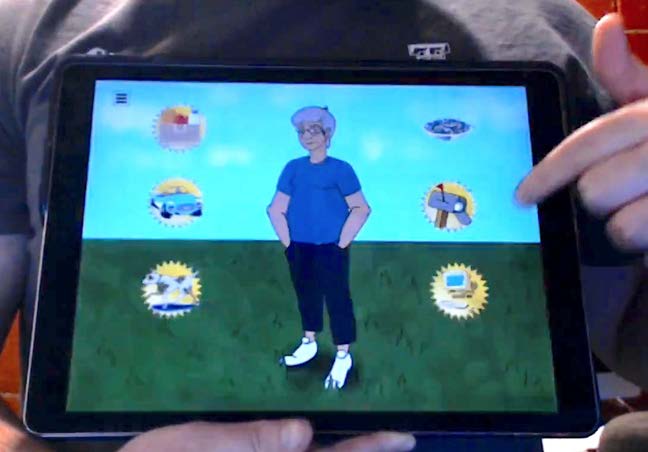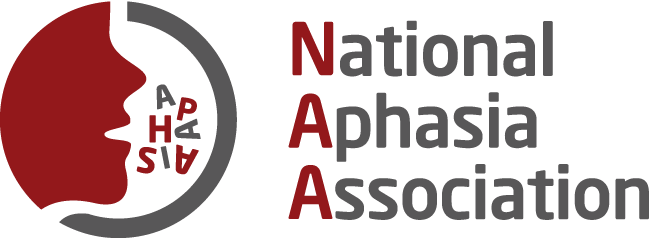Assistance for Communication Frustration
By: Crystal Price
Imagine having the mental capacity to understand a situation, but every time you try and communicate, no one understands what you are saying. You feel locked inside yourself yet know exactly what is happening around you. This condition is known as aphasia.
Researchers at Texas Tech University and Texas Tech University Health Sciences Center are trying to make life easier for those with aphasia by creating an interactive app that allows easier communication with a medical team.
Aphasia impacts an estimated two million Americans and is a communication disorder that typically results from damage to the left side of the brain which controls language and causes difficulties in speaking, understanding, reading, and/or writing. Usually, aphasia is caused by a stroke, but there are other causes as well. Any trauma to the left side of the brain such as concussions, brain tumors, gunshot wounds, brain infections, or progressive neurological disorders, such as certain types of dementia, can cause aphasia.

"It is important to know it is a condition, not a disease, and a lot of people have never heard of it," Melinda Corwin, a professor in the Texas Tech University Health Sciences Center Department of Speech, Language, and Hearing Sciences and director of the Stroke & Aphasia Recovery (StAR) Program, explains.
Aphasia is a frustrating condition for the patient and those trying to communicate with them. Because of the communication barrier, it can be difficult for patients with aphasia to convey concerns to their healthcare providers. "The effects of aphasia vary with every human; each person is a little different," Corwin said. "Some are completely non-verbal; no words will come out. Others speak in sentences, but sometimes they actually say the wrong word."
An audio example of what a person with aphasia might hear when you talk to them.Patient-Provider Communication (PPC), the communication between patient and healthcare worker, is important for those with aphasia to be able to communicate what they are feeling both physically and mentally. The goal of effective PPC is to enable patients to participate responsibly in their care and also for them to be able to go at their own pace.
Since aphasia affects normal communication methods such as speech and writing, the team focused on the right side of the brain, since it usually continues to function normally. Elko states that patients should be able to process visual information, music, and melodies, so visualization was the main focus of the app design. Elko and two Master of Fine Arts students, Stephanie Berrie and Jeramiah Macha, developed the graphics for the prototype, giving those with aphasia options to express their feelings and concerns.
"After creating the graphics in the storyboards, we decided to build the app using Unity 3D because it's very user friendly and it could be exported for just about any device including a TV," Elko said.
"We tried using multiple modalities, so we could catch whatever way that person did best with," Corwin added. "Some people get it through pictures, other people get it through key words, other people get it through hearing it, and other people get it through melody and rhythm."
The team also employed an actor from J. T. & Margaret Talkington College of Visual & Performing Arts at Texas Tech to be a doctor that explains aphasia as well as the app. Patients with aphasia responded to both the graphics and the doctor positively.
"What we are trying to do since these folks with aphasia can't tell us 'I feel nervous right now. This is really hard for me,' we're using their body, their physiological responses such as how much they sweat, their heart rate, and their eye movement." Corwin said. "We're looking for changes to see if that will tell us about how they are feeling since they can't just tell us with words."

To measure this data, Keene utilized psychophysiology, the study of the relationship between physiological and psychological phenomena, to gather solid evidence to see if the app was effective. Electrocardiogram (EKG), Skin Conductance Level (SCL), & eye tracking were the elements measured. The data from these tests are still being analyzed and will be reported later this year.
Corwin says that the potential outcome of the app would not only be beneficial for those with aphasia but could also help people with other communication deficiencies. For example, people who have a hearing impairment, people for whom English is a second language, or those who have autism.
Discoveries
-
Address
Texas Tech University, 2500 Broadway, Box 41075 Lubbock, TX 79409 -
Phone
806.742.3905 -
Email
vpr.communications@ttu.edu
